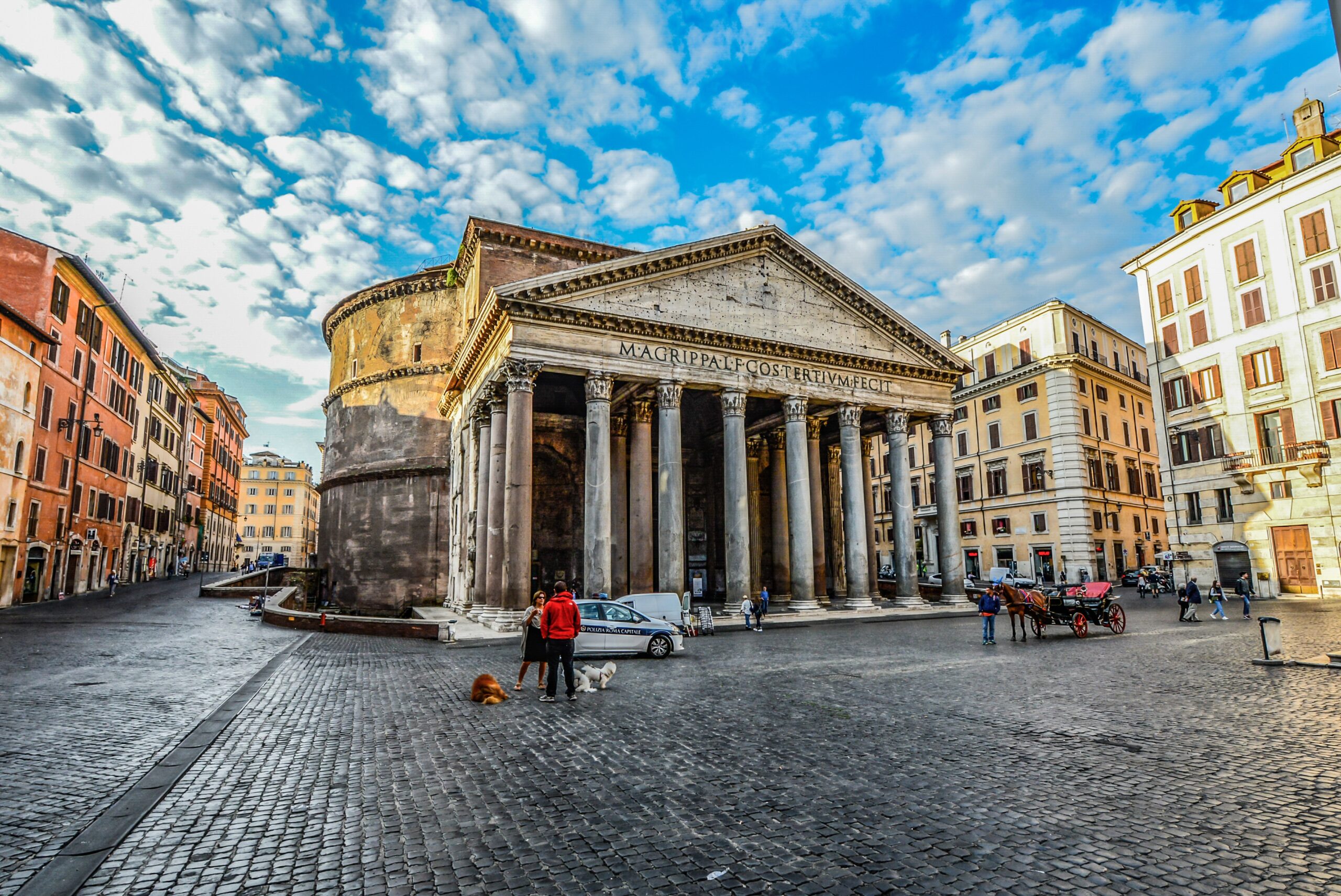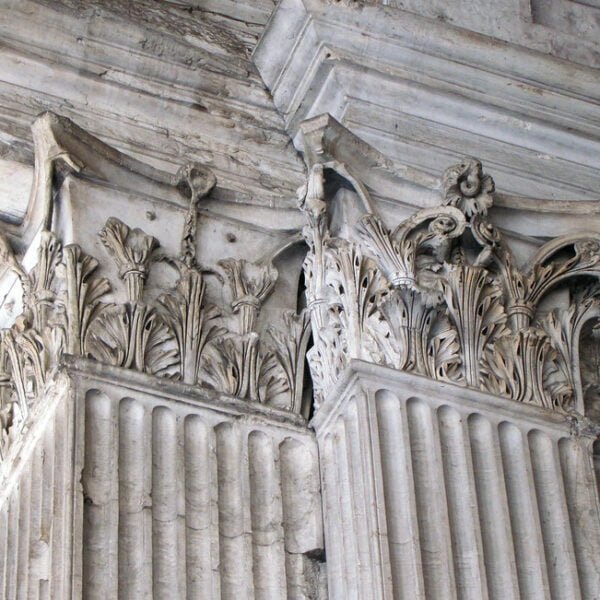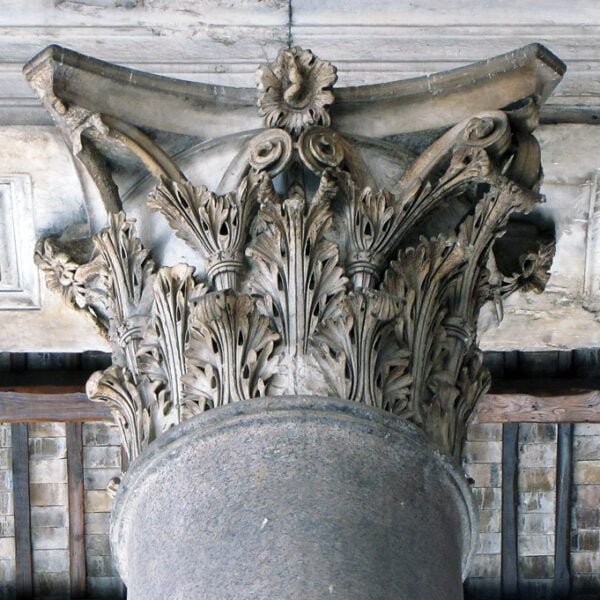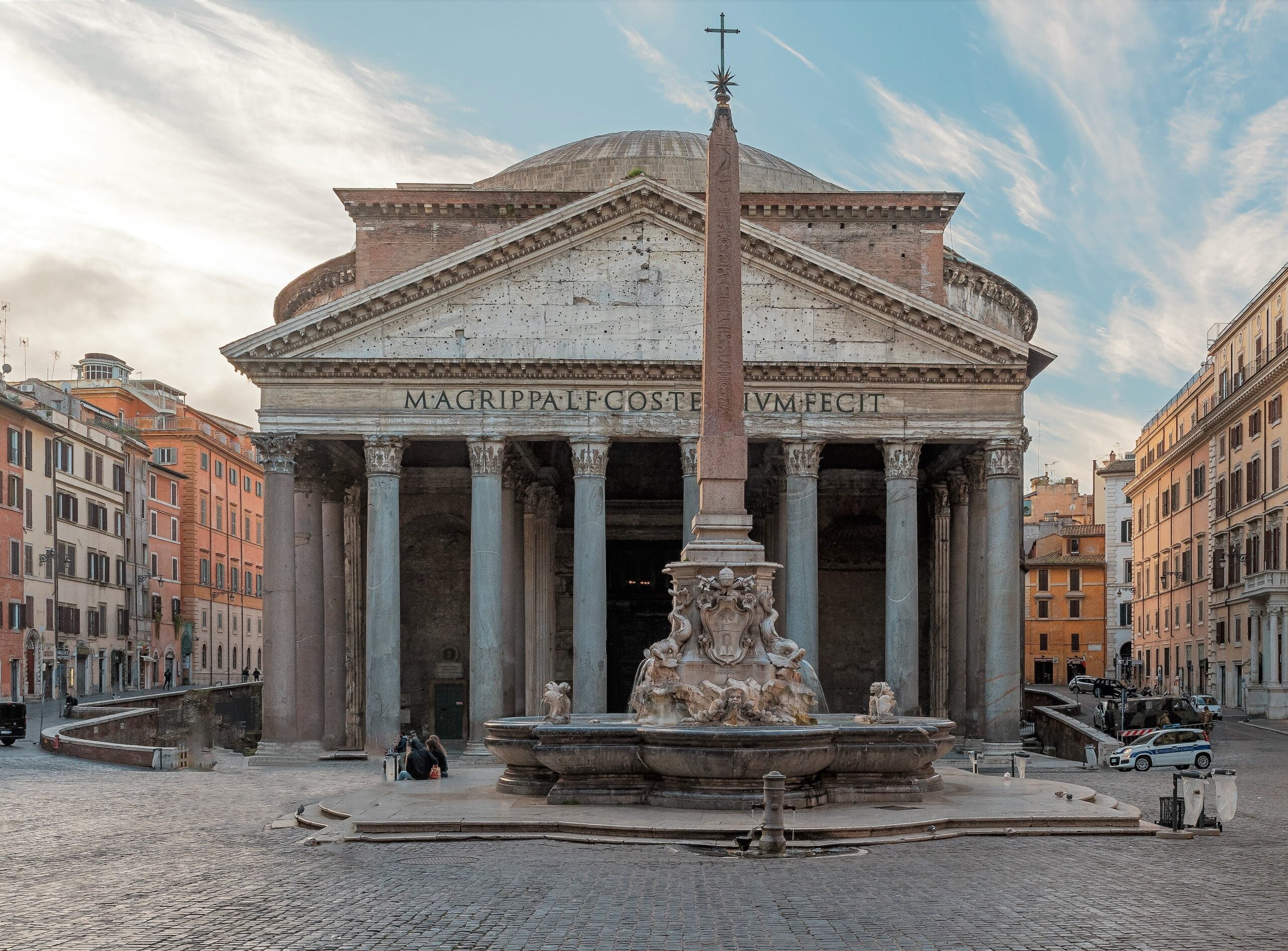Roman Travertine Pantheon Cornice
The cornice in roman travertine is an eye-catching detail at the entrance of the Pantheon in Rome. The Pantheon itself is definitely one of the most fascinating architectural projects we received in legacy from the ancient Romans. A brilliant example of roman travertine used for both construction and decorative purposes.
Its impressive and majestic look is the perfect representation of the power and prestige that Rome held during the so called Golden Age of its existence.
Pantheon’s Rich History
The Pantheon used to host the cult of all divinities of Roman religion (as confirmed by its name of Greek origins that literally means “of all the gods”). A first Pantheon was built between 27-25 b.C. following the plans of Roman emperor’s Augustus son-in-law, Marcus Agrippa. After a fire destroyed it entirely, the Roman emperor Hadrian gave the order to rebuilt it around 120 a.C.
Hadrian took part in the design of the new Pantheon, as he did with his own villa in Tivoli, Villa Adriana. On the front of the temple he still decided to celebrate the person that originally conceived the Pantheon, with the following quote: “Marcus Agrippa Lucii Filius Consul Tertium Fecit“, or “Marcus Agrippa, the son of Lucius, made this building on his third mandate”
In the 7th century Pope Boniface IV converted the Pantheon into a Christian church, the basilica of St. Mary and the Martyrs. Its uninterrupted use contributed to the good state of preservation of its interiors and exteriors. The Pantheon we can admire today is almost exactly the same that Romans used to visit. Unlike what happened with some important decorations, especially the ones in bronze that went lost or were stolen, the natural stones decorating the entrance and dressing up walls and floors within the temple are still standing today.

Pantheon Construction and the Importance of Roman Travertine
Architects and engineers, both ancient and modern, are fascinated by the Pantheon’s structure. For its construction Romans used their concrete (later called “roman concrete”), a resistant material made of concrete mixed with gravel, pozzolan, tuff, or travertine. These stones are in fact lighter than regular concrete. In this way they could avoid the excessive weight of concrete without giving up its compactness. These are all resistant materials, meant to be lasting, but only roman travertine can ensure a sense of holiness, purity, and contemplation. For this exact reason it is the only one on display at the entrance of the temple, from where it radiates all of its elegance. Of course, roman travertine was extracted from the historical Barco quarries, in Tivoli, still in use today.
The temple’s circular structure was built one layer on top of the other up to the dome. Roman travertine use here is massive. The walls are made of roman concrete, travertine, and tuff. Travertine is also part of the concrete used for the first ring of the dome, while the following ones required a mix of concrete and lighter materials, like pumice.
In Support of the Dome: The Cornice in Roman Travertine
The dome and its central opening are definitely the most famous detail of the whole Pantheon. Until the Renaissance period, it was the biggest dome ever built. Its diameter measures 43 meters. Since the temple has a rounded shape and no columns in the middle of the room, only eight columns along the temple’s perimeter and the front cornice bear all the weight.
Originally the Pantheon was surrounded by other buildings. The most elegant and refined details are, in fact, located at the temple’s front, and, of course, within it, therefore it is no coincidence that the cornice is made out of Travertine. As Romans praised Travertine mainly for its resistance and versatility, they still couldn’t resist the charm of its beauty. Thanks to its brightness, travertine played the major role of framing the bronze decoration that used to stand out inside the tympanum. Unfortunately the decoration was removed, but the cornice is still there, as a reminder of its existence.
The cornice is the highest element of the building after the dome, frames the tympanum, and overlooks the 16 granite Corinthian columns of the porch.


Other Roman Travertine Applications in the Pantheon
Not only the Pantheon itself but also the architectural structure in the immediate vicinity showed details made out of roman travertine. In ancient times, the temple’s entrance was preceded by a square paved in travertine. Romans already knew that with the right thickness, Travertine could be used not only to pave carriageable ways but also to bear the weight of large flows of pedestrians.
In more recent years, when archeologists uncovered a part of the “old” Pantheon built by Agrippa, they discovered that the building rested on solid foundations made of travertine blocks then covered with marble slabs.
Long-lasting and Sophisticated
Pantheon’s cornice was created using roman travertine of the highest quality. Almost two thousand years have passed since its installation, but its appearance has never changed. Pantheon itself is a great example of how far one can push human ingenuity when supported by mother nature.



Follow Us On Social Media: